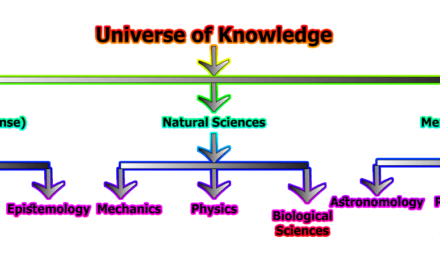Fundamental Principles of Classification in DDC:
Classification systems are the backbone of libraries, organizing vast amounts of information into coherent structures that enable efficient retrieval. Among these systems, the Dewey Decimal Classification (DDC) stands out as one of the most widely used and respected. Developed by Melvil Dewey in the late 19th century, the DDC has undergone numerous revisions and updates to accommodate the ever-expanding breadth of human knowledge. Understanding the basic principles of classification within the DDC framework is essential for librarians, information professionals, and even casual users seeking to navigate library collections effectively. These principles serve as guiding rules for placing materials in appropriate categories, ensuring that resources are organized logically and can be easily located by users. Here, we will explore the fundamental principles of classification in DDC.
1. Place a work where it will be most useful: The primary goal of classification is to facilitate access to information. Therefore, materials should be placed where they are most likely to be sought by users. For example, a book on the history of ancient Rome should be classified under history rather than under architecture, even if it discusses Roman architecture extensively.
2. Class a work according to the author’s intention: The subject matter of a work should be determined based on the author’s primary intent. For instance, a book containing drawings of various dog breeds should be classified based on whether its main purpose is to instruct in drawing or to provide information about dog breeds.
3. Class by subject, then by form, except in works of the imagination: Materials should be classified first by subject and then by form, except in the case of imaginative works such as literature and art. For example, an encyclopedia of art should be classified under art rather than under general encyclopedias.
4. In works of the imagination, class by original language, then literary form, rather than by subject: Imaginative works should be classified based on their original language and literary form rather than their subject matter. For instance, an anthology of English-language poems about nature would be classified under English poetry rather than under natural sciences.
5. Class a work in the most specific area possible: Materials should be classified in the most specific category that accurately represents their content. For example, a book specifically about violins should be classified under the specific number for violins rather than under the more general category of stringed instruments.
6. Class a work which covers two or more subjects with the subject which is discussed most: When a work covers multiple subjects, it should be classified under the subject that receives the most extensive treatment. For instance, a book about airplanes with a chapter on space shuttles would be classified under the category for aircraft.
7. If a work includes two subjects in the same discipline which receive equal treatment, and are not used to introduce or explain one another, class the work with the subject coming first in the schedules: In cases where a work addresses two subjects equally within the same discipline, it should be classified under the subject listed first in the classification schedules. For example, a book on physics and chemistry would be classified under physics if it does not primarily serve to introduce or explain chemistry.
8. If a work treats two aspects of a subject in different disciplines, class the work at the interdisciplinary number if one is given: When a work addresses two aspects of a subject in different disciplines, it should be classified under an interdisciplinary number if available. For example, a book on music in education and religious worship would be classified under the interdisciplinary number for music if significant material on both aspects is included.
9. If no subject is more important than another, Class a work on three or more subjects that are all subdivisions of a broader subject with the first higher number which includes them all: When a work covers multiple subjects of equal importance, it should be classified under the first higher number that encompasses all the subjects. For example, a book covering arithmetic, algebra, and calculus would be classified under the number for mathematics.
10. Class a work on three or more subjects in different disciplines in the generalities class: When a work addresses three or more subjects in different disciplines, it should be classified in the generalities class. For instance, a book covering history, geography, economics, and politics would be classified in the generalities section.
11. Class biographies, autobiographies, diaries, and reminiscences either with specific disciplines or together in a general biography section: Biographical works should be classified either within specific disciplines or together in a general biography section, depending on the nature of the library collection. For example, in a technical library, the biography of an inventor would be classified with works on invention, whereas in a public library, biographies may be located together regardless of subject.
12. In general, class a work first by subject then by geographical location: Materials should be classified first by subject and then by geographical location if applicable. For instance, a book on German architecture should be classified under architecture, with additional classification by geographical location.
13. When there is a further subdivision and there is a choice between subject and geographical location, choose the subject first: If further subdivision is necessary, prioritize subject classification over geographical location. For example, a work on the architecture of German school buildings would be classified under the architecture of school buildings before adding a classification for Germany.
14. If a subject acts upon another subject, class it under the subject which is acted upon: When one subject acts upon another, the work should be classified under the subject being acted upon. For example, a work on decoration in architecture would be classified under architecture rather than under decoration.
15. If a work has been treated from a particular standpoint, class in the subject unless it has been considerably altered: Works should be classified based on their subject matter unless they have been substantially altered in treatment. For instance, a book on mathematics for plumbers would be classified under mathematics unless the content significantly diverges from traditional mathematical principles.
16. Works on topics ‘with special reference to’ are classed under the more specific subject: Materials focusing on specific aspects of a broader subject should be classified under the more specific subject. For example, a work on contagious diseases, especially leprosy, would be classified under leprosy rather than under general medicine.
17. When a subject has no stated place in the classification scheme, use the number of the subject to which it is most closely related: If a subject does not have a designated place in the classification scheme, it should be classified under the subject to which it is most closely related. For example, advertising on the Internet would be classified under advertising using particular media.
18. When two headings clash, make a decision as to which is to prevail, and be consistent in its use: In cases where two headings conflict, a decision must be made as to which classification takes precedence, and consistency should be maintained in its use. For example, in classifying materials on political and armed struggle in Ireland, a decision must be made between politics and military science, with consistent application throughout the collection.
19. Works for and against a subject go together at the subject: Materials advocating for or against a particular subject should be classified together under that subject. For example, works both supporting and opposing voluntary euthanasia would be located at the same classification number, promoting objectivity in the library’s collection.
20. Avoid putting something where it will seem like criticism: Materials should be classified in a manner that avoids implying criticism or judgment. For instance, works on sensitive topics such as prostitution should not be placed in categories like law or ethics unless they specifically address legal or ethical issues related to the subject matter.
21. Always have a reason for your placing of a work: Each classification decision should be deliberate and based on a clear rationale. It’s crucial for library staff to understand why a particular work is assigned a specific classification number to ensure consistency and accuracy in organizing the collection.
22. Record all decisions: Recording classification decisions is essential for maintaining consistency and facilitating future reference. Documenting the rationale behind each classification ensures that similar works are placed consistently within the collection over time.
23. Check the number in the catalogue: Regularly checking the catalogue helps ensure that similar works are grouped together logically within the library’s collection. It aids in identifying potential inconsistencies or gaps in classification, allowing for adjustments to be made as needed to maintain an organized and accessible collection.
In conclusion, understanding the basic principles of classification in the Dewey Decimal Classification (DDC) system is crucial for effective organization and retrieval of information in libraries. By adhering to these principles, librarians and information professionals can ensure that resources are placed in appropriate categories, facilitating ease of access for users.
From considering the needs of users to classifying works based on subject matter, form, and authorial intent, each principle serves to guide the classification process systematically. Additionally, principles such as prioritizing specificity, recording decisions, and avoiding implicit judgment contribute to maintaining consistency and objectivity within library collections.
As libraries continue to evolve and expand their collections to encompass new areas of knowledge, a solid understanding of classification principles remains essential. By applying these principles thoughtfully and consistently, libraries can effectively organize their collections to meet the diverse informational needs of their users.

Former Student at Rajshahi University










